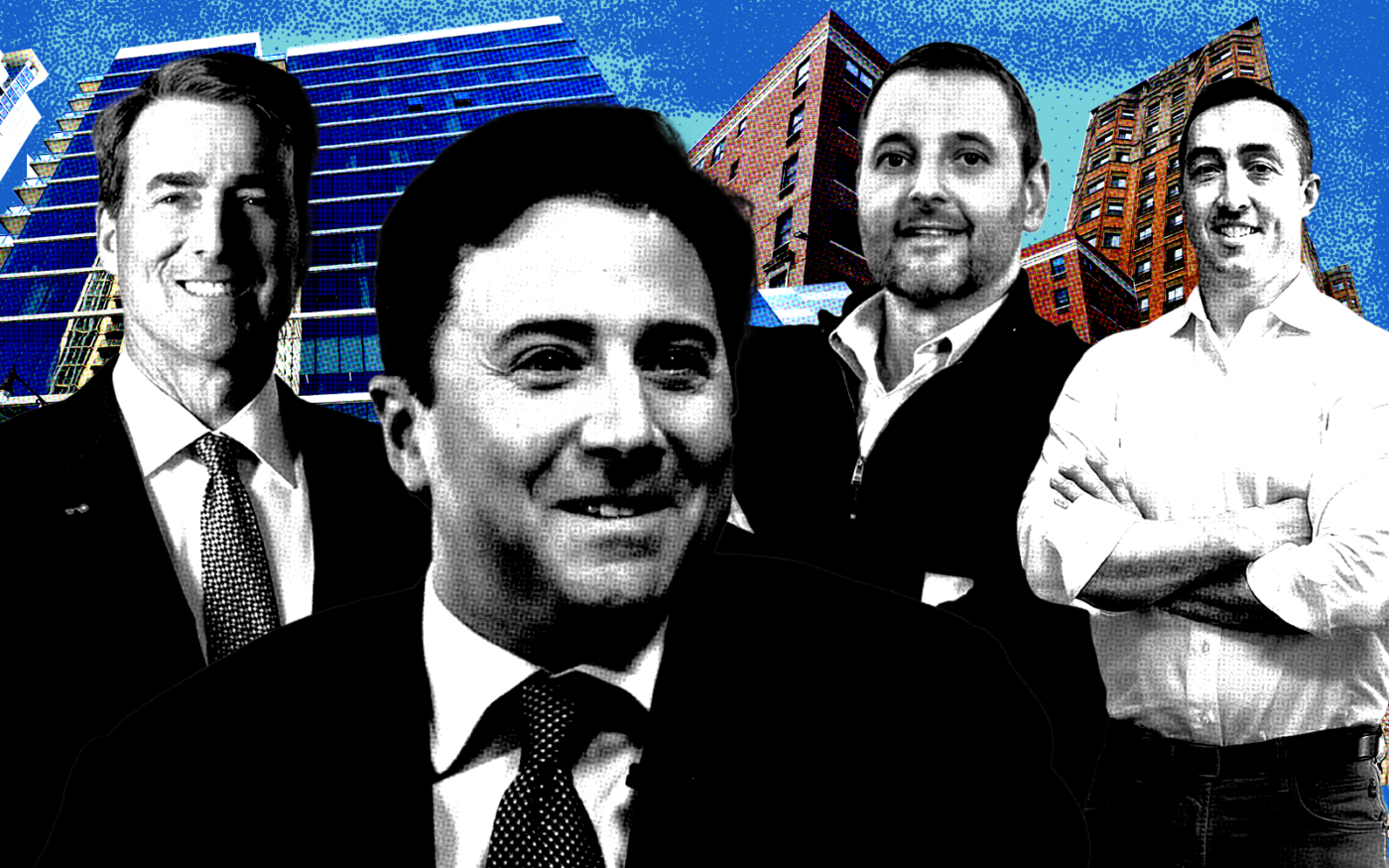
Trending
Chicago’s multifamily distress ticks up, yet avoids Sun Belt-level meltdown
Recent string of foreclosures, lack of bidders at auctions aren’t indicative of plunging market, multifamily insiders claim

From left: KeyBank CEO Christopher M. Gorman, Ares Management CEO Michael Arougheti, Cedar Street co-founder Alex Samoylovich and Spirit Investment Group principal Ian Hafner along with 1411 South Michigan Avenue, 5200 North Sheridan Road and 1033 West Loyola Avenue (Getty, KeyBank, Ares Management, Cedar Street, Spirit Investment Group, Google Maps)
Chicago’s traditionally reliable multifamily market has hit some speed bumps in recent months as foreclosure auctions, lawsuits and warnings from credit rating agencies stack up.
While big deals have gone awry in the Windy City, local industry players don’t see a reason to panic yet.
“A typical loan in trouble in Chicago is just in that gray area of being okay or not okay, versus Texas and Florida where [the loan] is so far blown off the mark,” said Andy Friedman of Kiser Group.
Nearly a dozen multifamily properties in Chicago valued over $1 million have faced some level of distress in recent months, according to a count by The Real Deal. Five were taken back by their lenders at court-ordered auctions; two are up for bids next month; two had foreclosures filed against them in the last year; and two have loans watchlisted by their lenders because their cashflow can’t cover their debt service costs.
Chicago’s biggest multifamily foreclosure suit so far hit developer Russland Capital’s 199-unit South Loop apartment complex at 1411 South Michigan Avenue. The troubled $76 million loan for the property completed in 2018 makes it the newest and priciest property on the distress list.
The loan was provided by an affiliate of Ares Management in 2022 to refinance the property’s construction debt. While the deal’s interest rate terms are unclear, at least one other property on the distress list is getting crushed by a floating rate that has soared since 2022.
“Deals I would be watching are the ones that were entered into in 2018 or 2019 and it was a ground-up development,” said Brad Werner, construction and commercial real estate leader at consulting firm Wipfli. “You had cap rates and yields that were not sustainable.”
Representatives of Russland Capital did not respond to requests for comment, and Ares Management declined to comment.
Still, Chicago has not been hit as hard as Sun Belt cities like Austin, Nashville and Phoenix, where borrowers rushed to take advantage of rapid population growth. Scores of landlords fueled by cheap, floating-rate debt went on buying sprees in these cities from late 2020 until March 2022.
Many overpaid, failed to complete renovation plans and haven’t been able to raise rents enough to keep pace with operating costs and debt payments.
If a complex is performing well but will not be able to pay off a balloon amount upon the loan’s maturity date, lenders may give the landlord more leeway, Friedman said. He is surprised, however, that banks haven’t been seizing more properties in Chicago.
“Banks have played very nice with owners,” he said.
Ares extended the loan at 1411 South Michigan Avenue twice before filing to foreclose.
But banks are not holding out hope forever.
A portfolio of South Side apartment complexes recently ended up back in the hands of lenders after no third parties bid on the properties at auction.
Eric Janssen of Chicago Real Estate Resources, a receiver for one of the portfolio’s buildings at 7752 South Racine Avenue, said the property’s lender has offers from prospective buyers and will put it back on the market if necessary. Even so, he paints a less rosy picture of the market.
The rising cost of debt, labor, construction, insurance and property taxes are all factors that are squeezing borrowers, he said.
“I think we can expect to see a lot more foreclosures in the coming years,” Janssen said.
The complex at Racine had a laundry list of deferred maintenance, an occupancy rate of 50 percent and empty ground floor retail. The cost to address the issues likely snowballed beyond what was feasible for the borrower, local real estate professional Carlos Perez. Perez did not return requests for comment.
That situation isn’t uncommon, said Noah Birk, a multifamily broker with Kiser Group who focuses on the South Side.
“Typically, at lower price points you get more of an entry-level transaction and less experienced investors that may be more likely to not have well thought out plans,” he said.
But for those who do have strong strategies, such investments can deliver solid returns.
Read more



“These are areas that are more cash-flow heavy, especially compared to the North Side, or compared to the booming markets in the country,” Birk said.
On the North Side, multifamily operators are benefiting from strong rent growth, but it’s not always enough to avoid landing in hot water.
A property near Loyola University Chicago, at 1033 West Loyola Avenue, fell victim to its floating rate. Credit ratings agency DBRS MorningStar watchlisted the property’s loan, noting that the interest rate changed from 3.2 percent in September 2022 to 7.34 percent in September 2023.
Distress on the North Side is likely isolated, said Drew Breneman, founder of real estate investment firm Breneman Capital. His Chicago properties, primarily located on the North and West Sides, notched 7 and 8 percent rent growth in 2022 and 2023, he said.
“The only distress we are going to see is capital markets-related,” Breneman said.




